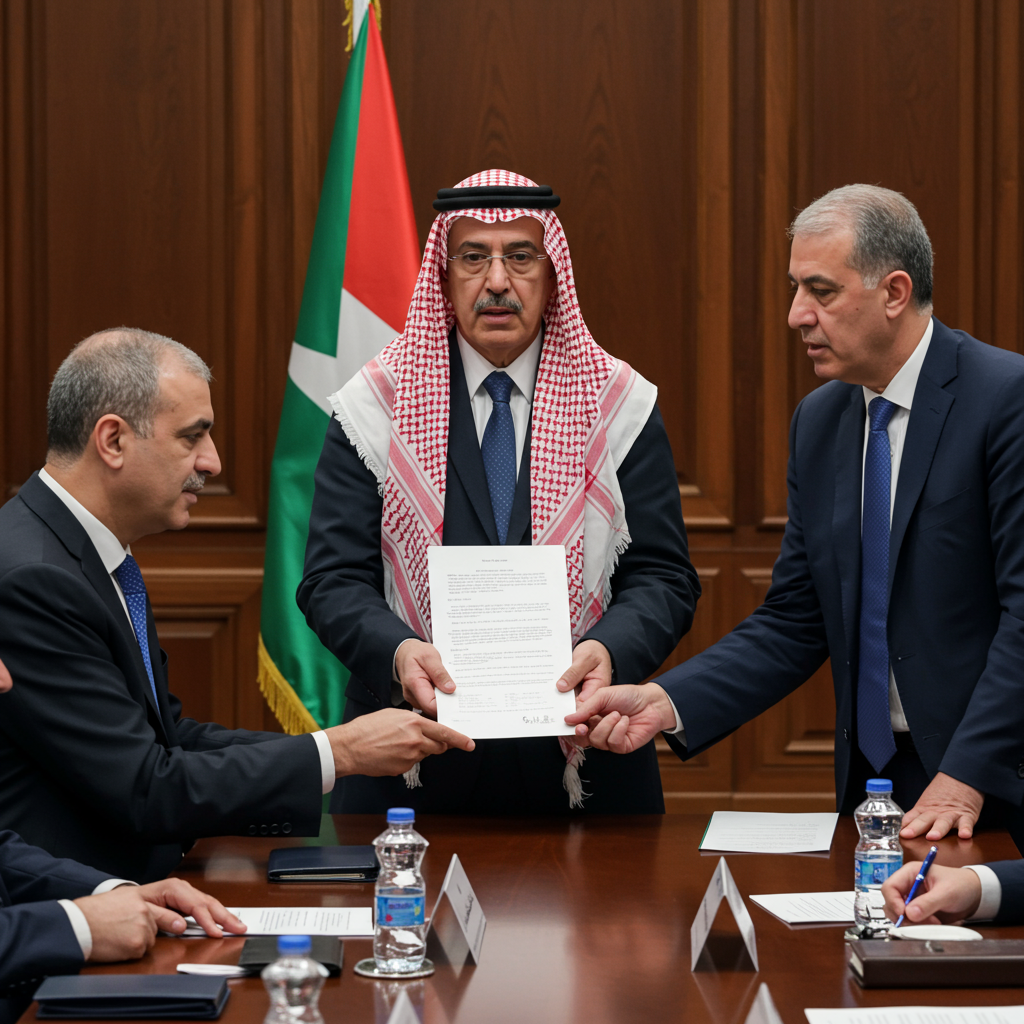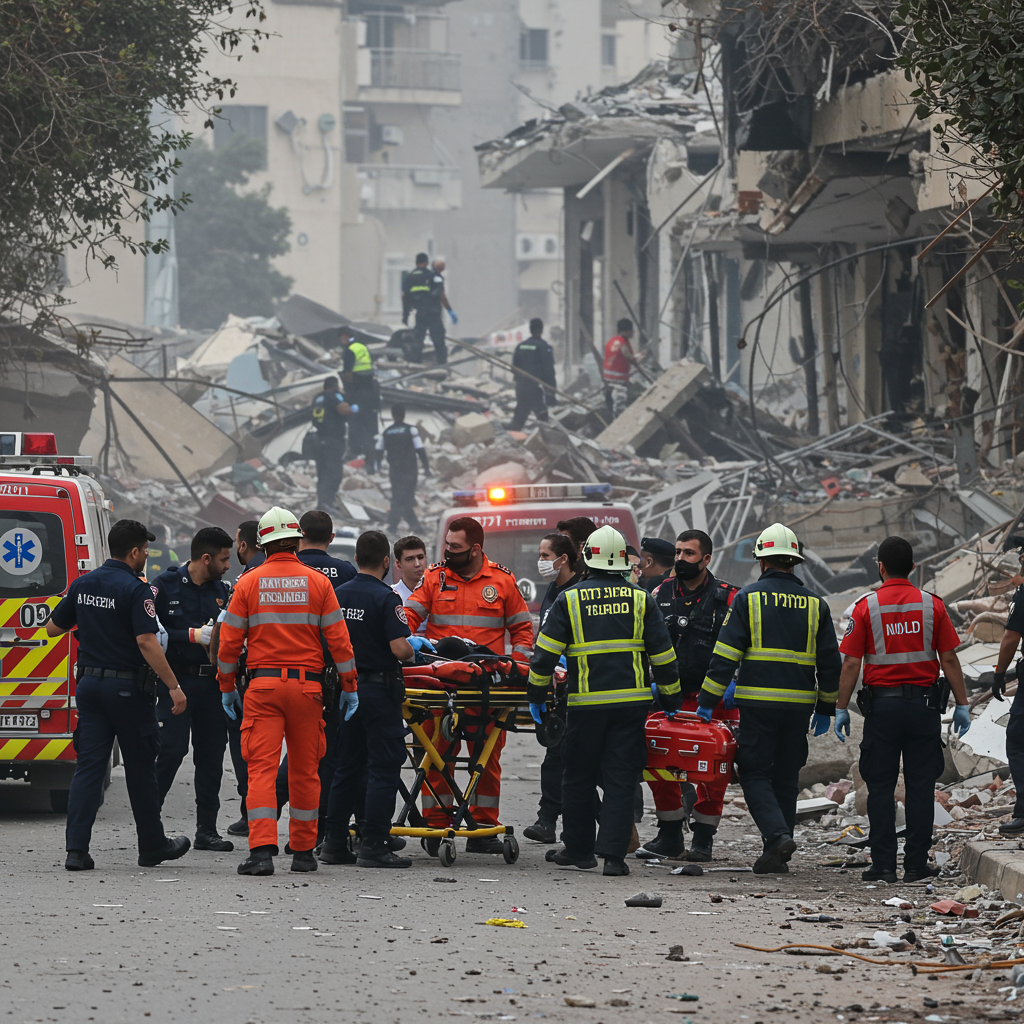A new proposal aimed at halting hostilities in the nearly two-year-long Gaza conflict appears to have gained traction, with the Palestinian group hamas indicating a positive reception. The group stated it is prepared to enter immediate negotiations regarding the implementation of a potential agreement. This development comes amid ongoing international efforts to broker a pause in fighting, facilitate the release of captives, and address the severe humanitarian crisis in the territory.
Mediated efforts, reportedly spearheaded by the United States with support from Qatar and Egypt, have been intensive in recent weeks. The proposed framework under consideration includes a temporary ceasefire, potentially lasting 60 days, alongside complex exchanges of hostages held in Gaza for Palestinian prisoners detained in Israel. A critical component involves initiating talks towards a permanent resolution to the prolonged conflict during this temporary truce period.
However, uncertainty remains regarding the specifics of Hamas’s response and whether significant modifications to the draft proposal are being requested. Bridging existing gaps between the two sides has proven challenging in past negotiations, often leading to agreements unraveling despite appearing close to completion.
Key Elements of the Proposed Truce
The comprehensive deal discussed in mediated talks encompasses several vital aspects intended to address immediate and underlying issues of the conflict:
Temporary Ceasefire: A pause in fighting, proposed to last for 60 days, offering a crucial window for de-escalation and negotiation.
Hostage & Prisoner Exchange: The release of israeli captives held in Gaza, including both living individuals and the return of bodies, in exchange for a specified number of Palestinian prisoners held in Israeli custody. Reports indicate potentially around 10 living Israeli hostages are still in Gaza, while over 9,900 Palestinians are imprisoned in Israel.
Humanitarian Aid: A significant increase in the immediate entry of essential humanitarian assistance – food, medicine, and supplies – into Gaza, addressing the desperate needs of the civilian population.
Troop Redeployment: A phased withdrawal or redeployment of Israeli military forces from parts of the Gaza Strip.
- Permanent Ceasefire Talks: The commitment to begin negotiations for a lasting end to the conflict during the 60-day truce period.
- www.theguardian.com
- www.aa.com.tr
- www.pbs.org
Hamas’s Stated Position and Goals
Hamas leadership has characterized their response to the mediators as “positive.” They have conveyed readiness for serious and responsible negotiations aimed at reaching a “comprehensive agreement.” Beyond the temporary truce, Hamas has explicitly stated its objectives include achieving a sustainable, lasting ceasefire, a complete withdrawal of Israeli forces from Gaza, an end to the Israeli-imposed siege on the territory, the prisoner exchange as noted, and the reconstruction of Gaza. Some reports also mention a potential handover of power in Gaza to a technocratic body as part of a final settlement.
Crucially, Hamas is reportedly seeking stronger guarantees that the proposed 60-day pause will indeed transition into a permanent end to the war. Internal discussions within the group reportedly saw hardline elements reluctantly accept the necessity of a temporary ceasefire, perhaps to regroup and strategize. They argue that continued military action only prolongs suffering and risks the lives of remaining captives.
A recent development, the release of Israeli-American hostage Edan Alexander, has been linked to the ongoing diplomatic efforts. Sources suggest this release, facilitated through direct US-Hamas talks mediated by Egypt and Qatar (though without direct Israeli participation in that specific handover), was perceived as a goodwill gesture towards US President Donald Trump ahead of his regional visit. This gesture was reportedly intended to facilitate the restart of broader ceasefire negotiations and ensure that “all key issues,” including the overarching goal of ending the war, are brought to the negotiating table.
Israeli Response and Political Landscape
Following Hamas’s response, Israeli media outlets reported that Israel had received the communication and was examining it closely. Israeli officials have indicated a “high probability” that proximity talks – mediated discussions where delegations are in separate rooms or locations – could begin soon if Hamas’s position allows. Preparations for an Israeli negotiating delegation to travel for potential indirect talks were reportedly underway.
The political context in Israel heavily influences the dynamics of these negotiations. Prime Minister Benjamin Netanyahu faces domestic pressure from families of hostages demanding their return but also relies on support from far-right coalition partners who have resisted a permanent end to the military campaign in Gaza. Netanyahu has previously expressed reservations about committing to a permanent ceasefire, partly due to political considerations. However, Israeli public opinion polls reportedly show strong support for any deal that would secure the release of hostages.
While Netanyahu’s political standing may have been recently strengthened by developments related to Iran, he also faces criticism for the security failures leading to the October 7, 2023, attack and accusations of prioritizing political survival over the fate of the captives. The government’s previous reaction to direct US talks with Hamas has reportedly been one of anger, adding another layer of complexity to the mediation efforts.
The Dire Humanitarian Context
The push for a ceasefire is intrinsically linked to the catastrophic humanitarian situation inside Gaza. The territory’s 2.4 million residents face what international bodies describe as a severe crisis, including widespread hunger and potential famine conditions. Aid organizations and the UN have reported critical shortages of food, medicine, and shelter.
According to various reports, Israel has severely restricted the entry of humanitarian aid through Gaza’s crossings for extended periods, a tactic Israel claims is necessary to pressure Hamas for hostage releases. Residents describe relying on contaminated well water, leading to illness, and a complete lack of essential supplies. The worsening conditions since previous ceasefires collapsed have underscored the urgent need for sustained aid delivery.
The human cost of the conflict is immense. The October 7, 2023, attack by Hamas in Israel resulted in approximately 1,200 deaths, mostly civilians, and the abduction of 251 hostages. Israel’s subsequent military campaign in Gaza has led to a staggering number of casualties, with the territory’s health ministry reporting over 57,000 deaths since October 2023, the vast majority being women and children. While the Israeli military maintains it follows international law and targets militants, blaming Hamas for operating in civilian areas, the scale of civilian death and displacement is widely documented, with roughly 90% of Gaza’s population displaced.
The legal dimensions of the conflict also loom large, with International Criminal Court arrest warrants issued for Israeli leaders and a genocide case against Israel underway at the International Court of Justice, adding further international pressure for a resolution.
The Path Forward
Hamas’s positive signal represents a potential opening, but the path to a comprehensive agreement remains fraught with challenges. Negotiating the specific details of the hostage-for-prisoner exchange ratios, ensuring the sustainability of any ceasefire, agreeing on the terms of Israeli withdrawal, lifting the siege, and establishing mechanisms for reconstruction and governance in Gaza are all complex hurdles that have derailed previous attempts.
The role of mediators, particularly the United States, Egypt, and Qatar, will be critical in facilitating indirect discussions and bridging the significant trust deficit between the parties. The upcoming regional visits by US officials, including President Trump, could provide further impetus for progress, but the historical difficulty in finalizing deals underscores the fragility of the current moment. Ultimately, reaching a lasting peace will require concessions from both sides on issues that are deeply sensitive and central to their core demands and security concerns.
Frequently Asked Questions
What is the current status of the latest Gaza ceasefire proposal?
Hamas has responded positively to a new US-brokered proposal for a ceasefire in Gaza. They have stated their readiness to immediately enter negotiations to implement the deal. The proposal includes a 60-day pause in fighting, hostage-for-prisoner exchanges, increased humanitarian aid, limited Israeli troop withdrawal, and talks aimed at achieving a permanent end to the conflict. Both sides are now reportedly reviewing positions ahead of potential mediated talks.
What are Hamas’s key demands in these ceasefire negotiations?
Beyond a temporary truce, Hamas’s stated goals for a comprehensive agreement include a sustainable and lasting ceasefire, a complete withdrawal of Israeli forces from Gaza, the lifting of the Israeli siege on the territory, a significant exchange of Palestinian prisoners for Israeli hostages, and the reconstruction of Gaza. They are also reportedly seeking stronger guarantees that the current proposal will transition into a permanent cessation of hostilities.
How does the humanitarian situation in Gaza relate to the truce talks?
The severe humanitarian crisis in Gaza is a central issue driving the ceasefire negotiations and is a key demand for Hamas. With widespread hunger, critical shortages of aid, and a lack of basic resources like clean water due to ongoing restrictions on access, there is urgent pressure to increase humanitarian assistance. Ensuring the unimpeded delivery of aid is a major component of the proposed deal and a non-negotiable point for negotiating parties seeking to alleviate the suffering of Gaza’s civilian population.




